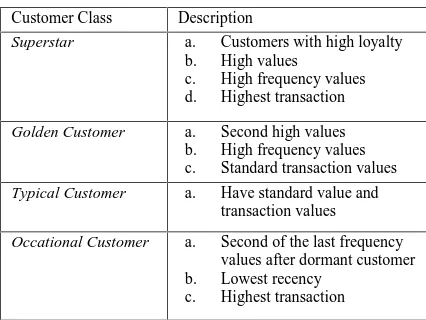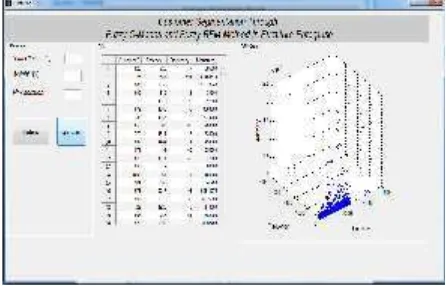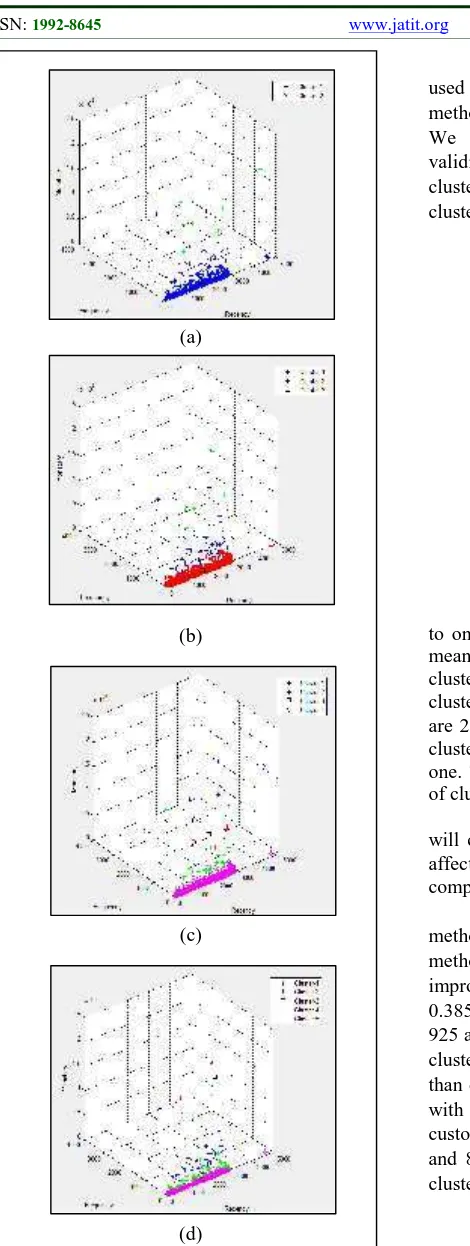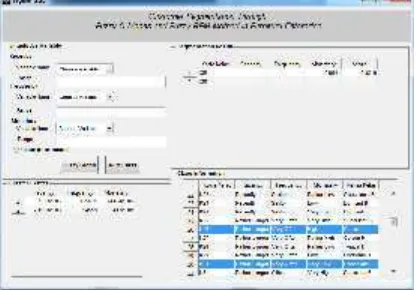Jour nal of The oretical a nd Applied Information Tec hnology
© 2005 - 2015 JATIT & LLS. All rights reserved
ISSN: 1992-8645 www.jatit.org E-ISSN: 1817-3195
JOURNAL OF THEORETICAL AND APPLIED
INFORMATION TECHNOLOGY
EDITORIAL COMMITTEE
NIAZ AHMAD
(Chief Editor)
Professor, FCE, MOE, H-9 Islamabad
PAKISTAN
SHAHBAZ GHAYYUR
(Co- Chief Editor)
Assistant Professor, DCS, FBAS, International Islamic University Islamabad,
PAKISTAN
SAEED ULLAH
(Associate Editor)
Assistant Professor, DCS, Federal Urdu University of Arts, Science & Technology Islamabad,
PAKSITAN
MADIHA AZEEM
(Associate Editor)
Journal of Theoretical and Applied Information Technology, Islamabad.
PAKISTAN
SALEHA SAMAR
(Managing Editor)
Journal of Theoretical and Applied Information Technology, Islamabad.
PAKISTAN
KAREEM ULLAH
(Managing Editor)
Journal of Theoretical and Applied Information Technology, Islamabad.
PAKISTAN
SHAHZAD A. KHAN
Lecturer IMCB, FDE Islamabad, PAKISTAN
(Managing Editor/Linguists & In-charge Publishing)
Journal of Theoretical and Applied Information Technology, Islamabad.
PAKISTAN
August 2015. Vol. 78 No.3 .
i
Jour nal of The oretical a nd Applied Information Tec hnology
© 2005 - 2015 JATIT & LLS. All rights reserved
ISSN: 1992-8645 www.jatit.org E-ISSN: 1817-3195
JOURNAL OF THEORETICAL AND APPLIED
INFORMATION TECHNOLOGY
REGIONAL ADVISORY PANEL
Dr. SIKANDAR HAYAT KHIYAL
Professor &Chairman DCS& DSE, Fatima Jinnah Women University, Rawalpindi, PAKISTAN
Dr. MUHAMMAD SHER
Professor &Chairman DCS, FBAS, International Islamic University Islamabad, PAKISTAN
Dr. ABDUL AZIZ
Professor of Computer Science, University of Central Punjab, PAKISTAN
Dr. M. UMER KHAN
Asst. Professor Department of Mechatronics, Air University Islamabad, PAKISTAN
Dr. KHALID HUSSAIN USMANI
Asst. Professor Department of Computer Science, Arid Agriculture University,
Rawalpindi, PAKISTAN
August 2015. Vol. 78 No.3
.
ii
Jour nal of The oretical a nd Applied Information Tec hnology
© 2005 - 2015 JATIT & LLS. All rights reserved
ISSN: 1992-8645 www.jatit.org E-ISSN: 1817-3195
JOURNAL OF THEORETICAL AND APPLIED
INFORMATION TECHNOLOGY
ED ITORIAL ADVISORY BOARD
August 2015. Vol. 78 No.3
.
iii Dr. CHRISTEL BAIER
Technical University Dresden, GERMANY
Dr KHAIRUDDIN BIN OMAR UniversitiKebangsaanMalysia, 43600 Bangi
Selangor Darul-Ehsan, MALYSIA
Dr. YUSUF PISAN
University of Technology, Sydney, AUSTRALIA
Dr. S. KARTHIKEYAN Department of Electronics and Computer Engineering, Caledonian College of Engineering,
OMAN (University College with Glascow University, Scotland, UK) DR. YUXIN MAO
School Of Computer & Information Engineering Zhejiang Gongshang University, CHINA
Dr. ZARINA SHUKUR
FakultiTeknologidanSainsMaklumat, University Kebangsaan MALYSIA
Dr. NOR AZAN MAT ZIN
Faculty of Information Science & Technology, National University of MALYSIA
Dr. R.PONALAGUSAMY
National Institute of Technology, Tiruchirappalli, Tamil Nadu, INDIA
Dr. MOHAMMAD TENGKU SEMBOK Universiti Kebangsaan MALYSIA
Dr. PRABHAT K. MAHANTI University of New Brunswick, Saint John, New
Brunswick, CANADA
Dr. NITIN UPADHYAY
Birla Institute of Technology and Science (BITS), Pilani-Goa Campus, INDIA
Dr. S.S.RIAZ AHAMED
Mohamed Sathak Engineering College, Kilakarai, &Sathak Institute of Technology, Ramanathapuram , Tamilnadu, INDIA
Dr. A. SERMET ANAGÜN
Eskisehir Osmangazi University, Industrial Engineering Department, Bademlik Campus,
26030 Eskisehir, TURKEY.
Dr. YACINE LAFIFI
Department of Computer Science, University of Guelma, BP 401, Guelma 24000, ALGERIA.
Dr. CHRISTOS GRECOS
School Of Computing, Engineering And Physical Sciences University Of Central Lancashire.
UNITED KINGDOM
Dr. JAYANTHI RANJAN Institute of Management Technology Raj Nagar, Ghaziabad, Uttar Pradesh, INDIA
Dr. ADEL M. ALIMI
National Engineering School of Sfax (ENIS), University of SFAX, TUNISIA
Dr. RAKESH DUBE
Professor & Head, RKG Institute of Technology, Ghaziabad, UP, INDIA
Dr. ADEL MERABET
Department of Electrical & Computer Engineering, Dalhousie University, Halifax,
CANADA
Dr. HEMRAJ SAINI
CE&IT Department, Higher Institute of Electronics, BaniWalid. LIBYA
Jour nal of The oretical a nd Applied Information Tec hnology
© 2005 - 2015 JATIT & LLS. All rights reserved
ISSN: 1992-8645 www.jatit.org E-ISSN: 1817-3195 August 2015. Vol. 78 No.3
.
iv Dr. SEIFEDINE KADRY
Lebanese International University, LEBONON
Dr. AIJUAN DONG Department of Computer Science Hood College Frederick, MD 21701. USA
Dr. ZURIATI AHMAD ZUKARNAIN University Putra Malaysia,
MALAYSIA
Dr. HEMRAJ SAINI
Higher Institute of Electronic, BaniWalid LIBYA
Dr. CHELLALI BENACHAIBA University of Bechar, ALGERIA
Dr. MOHD NAZRI ISMAIL
University of Kuala Lumpur (UniKL) MALYSIA
Dr. VITUS SAI WA LAM The University of Hong Kong, CHINA
Dr. WITCHA CHIMPHLEE SuanDusitRajabhat University, Bangkok,
THAILAND
Dr. SIDDHIVINAYAK KULKARNI University of Ballarat, Ballarat,
AUSTRALIA
Dr. S. KARTHIKEYAN Caledonian College of Engineering,
OMAN
Dr. DRAGAN R. MILIVOJEVIĆ
Mining and Metallurgy Institute BorZelenibulevar 35, 19210 Bor, SERBIA
Dr. E. SREENIVASA REDDY Principal - VasireddyVenkatadri Institute of
Technology, Guntur, A.P., INDIA
Dr OUSMANE THIARE Gaston Berger University, Department of Computer Science, UFR S.A.T, BP 234 Saint-
Louis SENEGAL
Dr. SANTOSH DHONDOPANT KHAMITKAR RamanandTeerthMarathwada University, Nanded.
Maharashtra 431605, INDIA
Dr. M. IQBAL SARIPAN
(MIEEE, MInstP, Member IAENG, GradBEM) Dept. of Computer and Communication Systems Engineering, Faculty of Engineering, Universiti
Putra MALAYSIA
Dr. E. SREENIVASA REDDY Principal - VasireddyVenkatadri Institute of
Technology, Guntur, A.P., INDIA
Dr. T.C.MANJUNATH, Professor & Head of the Dept., Electronicis& Communication Engg. Dept,
New Horizon College of Engg., Bangalore-560087, Karnataka, INDIA.
Dr. SIDDHIVINAYAK KULKARNI
Graduate School of Information Technology and Mathematics University of Ballart AUSTRALIA
Dr. SIKANDAR HAYAT KHIYAL Professor & Chairman DCS& DSE, Fatima
Jinnah Women University, Rawalpindi,
PAKISTAN
Dr. MUHAMMAD SHER Professor & Chairman DCS, FBAS, International Islamic University Islamabad,
PAKISTAN
Dr. ABDUL AZIZ
Professor of Computer Science, University of Central Punjab, PAKISTAN
Dr. M. UMER KHAN
Jour nal of The oretical a nd Applied Information Tec hnology
© 2005 - 2015 JATIT & LLS. All rights reserved
ISSN: 1992-8645 www.jatit.org E-ISSN: 1817-3195
Elite Panel Members Have A Decision Weight Equivalent of Two Referees (Internal OR External). The Expertise Of Editorial Board Members Are Also Called In For Settling Refereed Conflict About
August 2015. Vol. 78 No.3
Acceptance/Rejection And Their Opinion Is Considered As Final.
.
v Dr. RIKTESH SRIVASTAVA
Assistant Professor, Information Systems Skyline University College P O Box 1797, Sharjah, UAE
Dr. BONNY BANERJEE
PhD in Computer Science and Engineering, The Ohio State University, Columbus, OH, USA
Senior Scientist Audigence, FL, USA
PROFESSOR NICKOLAS S. SAPIDIS DME, University of Western Macedonia
Kozani GR-50100, GREECE.
Dr. NAZRI BIN MOHD NAWI Software Engineering Department, Faculty of
Science Computer Information Technology,
Universiti Tun Hussein Onn
MALAYSIA
Dr. JOHN BABALOLA OLADOSU Ladoke Akintola University of Technology,
Ogbomoso, NIGERIA
Dr. ABDELLAH IDRISSI
Department of Computer Science, Faculty of Science, Mohammed V University - Agdal,
Rabat, MOROCCO
Dr. AMIT CHAUDHRY
University Institute of Engineering and Technology, Panjab University, Sector-25,
Chandigarh, INDIA
Dr. ASHRAF IMAM
Aligarh Muslim University, Aligarh-INDIA
Dr. MOHAMMED ALI HUSSAIN Dept. of Computer Science & Engineering, Sri Sai Madhavi Institute of Science & Technology,
Mallampudi, Rajahmundry, A.P, INDIA
Dr. KHALID HUSSAIN USMANI Asst. Professor Department of Computer Science,
Arid Agriculture University, Rawalpindi, PAKISTAN
Dr. GUFRAN AHAMD ANSARI Qassim University, College of Computer Science,
Ministry of Higher Education, Qassim University, KINGDOM OF SAUDI
ARABIA
Dr. Defa Hu
School of Information, Hunan University of Commerce
Changsha 410205, Hunan, P. R. of China
Jour nal of The oretical a nd Applied Information Tec hnology
© 2005 - 2015 JATIT & LLS. All rights reserved
ISSN: 1992-8645 www.jatit.org E-ISSN: 1817-3195
PREFACE
Journal of Theoretical and Applied Information Technology (JATIT) published since 2005 (E-ISSN 1817- 3195 / ISSN 1992-8645) is an International refereed research publishing journal with a focused aim of promoting and publishing original high quality research dealing with theoretical and scientific aspects in all disciplines of Information Technology. JATIT is an international scientific research journal focusing on issues in information technology research. A large number of manuscript inflows, reflects its popularity and the trust of world's research community. JATIT is indexed with various organizations and is now published on monthly basis.
All technical or research papers and research results submitted to JATIT should be original in nature, never previously published in any journal or undergoing such process across the globe. All the submissions will be peer-reviewed by the panel of experts associated with JATIT. Submitted papers should meet the internationally accepted criteria and manuscripts should follow the style of the journal for the purpose of both reviewing and editing. All of its articles also appear online as per policy of JATIT
Journal of Theoretical and Applied Information Technology receives papers in continuous flow and we will consider articles from a wide range of Information Technology disciplines encompassing the most basic research to the most innovative technologies. Please submit your papers electronically to our submission system at http://jatit.org/submit_paper.php in an MSWord, Pdf or compatible format so that they may be evaluated for publication in the upcoming issue. This journal uses a blinded review process; please remember to include all your personal identifiable information in the manuscript before submitting it for review, we will edit the necessary information at our side. Submissions to JATIT should be full research / review papers (properly indicated below main title).
It is the sole responsibility of the submitting authors to make sure that the submitted manuscript is not in process of publication anywhere in any conference/journal across the globe, nor part or whole of it is copied from any source.
The review process may take anywhere from five days to two months depending on the response time to referees. Authors will be informed about the updated status via e-mail as soon as we receive the evaluation results. After submission of publication dues for accepted manuscripts a publication slot will be allocated to your manuscript for its publication in upcoming monthly issues of JATIT.
******************
August 2015. Vol. 78 No.3.
Jour nal of The oretical a nd Applied Information Tec hnology
© 2005 - 2015 JATIT & LLS. All rights reserved
ISSN: 1992-8645 www.jatit.org E-ISSN: 1817-3195
ABSTRACTING & INDEXING
Journal of Theoretical and Applied Information Technology Islamabad Pakistan is focused, double blind peer reviewed journal that is now being published monthly and is published by Asian Research Publishing Network and is Indexed / Abstracted by the following International Agencies and institutions. JATIT has been regularly published since 2005 and now has a well reputed international standing and invites contributions from researchers, scientists, and practitioners from all over the world.
*- Ulrich's Periodicals Directory
*- DataBase systems and Logic Programming (DBLP) *- EBSCO Publishing USA
*- Directory of Open Access Journals (DOAJ) *- Google & Google Scholar Journals
*- The Index of Information Systems Journals *- Information Technology Resources Collection *- ZDNet Australia
*- NLM Catalog
*- Computing Research and Education Association of Australasia *- CiteSeer
*- Elsevier *- SCOPUS
*- Engineering Village *- TOC Premier
******************
Feel free to suggest JATIT to any Indexing & Abstracting Services which are appropriate to its scope
TM
August 2015. Vol. 78 No.3
*- Computer Science Journals
*- Computers and Applied Sciences Complete *- N|W Switzerland
*- Microsoft Academic Search *- Cabell Publishing
*-OpenJgate *- INSPEC
*- IAOR Palgrave Macmillan
.
vii
Journal of Theoretical and Applied Information Technology
31stAugust 2015. Vol.78. No.3
© 2005 - 2015 JATIT & LLS. All rights reserved.
ISSN:1992-8645 www.jatit.org E-ISSN:1817-3195
380
CUSTOMER SEGMENTATION THROUGH
FUZZY C-MEANS AND FUZZY RFM METHOD
NI PUTU PUTRI YULIARI1,I KETUT GEDE DARMA PUTRA2, NI KADEK DWI RUSJAYANTI3
Department Of Information Technology, Engineering Faculty in Udayana University Bukit Jimbaran, Bali, Indonesia, Telp. +62361703315
E-mail: [email protected],[email protected],[email protected]
ABSTRACT
This research aims for finding the potential customer use data transaction. This causes, the company is difficult to arrange customers who have high and low loyalty and this research have a application for customer segmentation to help analyzing transaction data with Fuzzy C-Means for clustering and Fuzzy RFM for identify the customers. Softwares used to conduct this experiment are Microsoft SQL Server to saving the database and Matlab as the tools. The results of this segmentation for four experiments are two classes. Its has superstar I and Occasional H for each number cluster and then for the best number of cluster for this experiments are two clusters according MPC method.
Keywords: Customer segmentation, Clustering, Fuzzy c-means, Fuzzy RFM, MPC (Modified Partition
Coefficient)
1. INTRODUCTION
The company is difficult to arrange customers who have high and low loyalty. This is caused of data transaction growth fast and limited ability to segmenting with manual computation. Amount of data from furniture company has important information to segmenting, the process of finding in a set of data called data mining[1]. Data mining is used to give services to customers based on views or insights of customers with CRM strategy. Every relation with customers can make a benefit to the company. Profitable relationship is done by analyzing data transaction of customers. Because of that marketing is important to dividing customers[2]. Volume data is continues to grow and can not be analysis with manual[1]. The application of data mining can help in analyzing customers to determine level of loyalty customer.
Effective segmentation leads to competitive advantage, recognition and exploitation of new market opportunities, selection of the appropriate target market, enhanced differentation and positioning, and increased profitability. Despite the appealing strategic and tactical benefit of market segmentation, cluster analysis remain the most favoured method.[6] The basic of idea of cluster analisys is to divide a heterogeneous customers market into homogeneous sub-grups[9]. But, some information is inevitably lost when object are grouped. Information loss is
not problematic but it can result in the wrong conclusions[8]. Hence, there is no succesful segmentation without an appropriate clustering algorithm[7].
Therefore, this research have a application for customer segmentation to help analyzing transaction data in a furniture company, the application is developing method of Fuzzy C-Means and Fuzzy RFM. Software used to conduct this experiment is Microsoft SQL Server for saving database and Matlab as the tools. This application used fuzzy clustering algorithm with Fuzzy C-Means method, the algorithm have been selected because this method can make data grouped by the cluster. Fuzzy RFM (Recency, frequency, monetary) method used to choose customer with high or low loyalty from the result data of Fuzzy C-Means method. Fuzzy RFM can determine customer to the class with level loyalty their have.
2. CUSTOMER SEGMENTATION
Journal of Theoretical and Applied Information Technology
31stAugust 2015. Vol.78. No.3
© 2005 - 2015 JATIT & LLS. All rights reserved.
ISSN:1992-8645 www.jatit.org E-ISSN:1817-3195
381 good cluster and characteristic distinctly.
Figure 1 explaining about system process for customer segmentation, the input of this system is database from the company. Database from the company was choosed use data preparation process, data will divided to third group with Fuzzy RFM parameter. Data with paramater will be clustering with Fuzzy C-Means method and then apply MPC method for validity cluster. Output from this application is class category of the customer.
Figure 1: System Process
3. CLUSTERING
The RFM method used for determine variable of measuring purchase products by customers. Variable can determine as recency, frequency and monetary[3].
a. Recency is range time (day, month, year) from end transaction until this time by customers purchase.
b. Frequency is transaction total or transaction average in once period.
c. Monetary is average cost total of customers in once period.
Segmentation cluster in the retail company divided by six characteristic with RFM values of customers[2].
Table 1:Customer Characteristic with RFM Values.
Customer Class Description
Superstar a. Customers with high loyalty
b. High values
c. High frequency values d. Highest transaction
Golden Customer a. Second high values
b. High frequency values c. Standard transaction values
Typical Customer a. Have standard value and
transaction values
Occational Customer a. Second of the last frequency
values after dormant customer b. Lowest recency
c. Highest transaction
Everyday Shopper a. Have raising transaction
b. Low transaction
c. Have value with middle until low scale
Dormant Customer a. Lowest frequency and value
b. Lowest recency
Attribute distribution base on RFM will show in Table 2.
Table 2: Domain Value RFM
Atribute Linguistic variable
Domain Value
Recency Long Time Ago
Rather Longer Recently
0≤ r < Max_r1 day
Max_r1 day< r < Max_r2 day
Max_r2 day < r
Frequency Seldom
Rather Frequent Often
Very Often
0≤ f < Max_f1 transaction
Max_f1 transaction < f < Max_f2 transaction Max_f2 transaction <f< Max_f3 transaction Max_f3 transaction < f
Monetary Very Low
Low Rather Low Rather High High Very High
0≤ m < Max_m1 Rupiah
IDR Max_m1 < m < IDR Max_m2
IDR Max_m2 < m < IDR Max_m3
IDR Max_m3 < m < IDR Max_m4
IDR Max_m4 < m < IDR Max_m5
IDR Max_m5 < m
Fuzzy RFM used trapezoid graph for dispart the domain value. The graph of domain value from fuzzy RFM will show in figure 2.
Figure 2a : Fuzzy RFM Recency
Journal of Theoretical and Applied Information Technology
31stAugust 2015. Vol.78. No.3
© 2005 - 2015 JATIT & LLS. All rights reserved.
ISSN:1992-8645 www.jatit.org E-ISSN:1817-3195
382
Figure 2c : FuzzyRFM Recency
Customer segmentation process will do with computing membership degree of the centroid from every cluster with all class from fuzzy model. Its computing used equation from zumstein[11]
(1) Explanation:
µA = Degree of membership for every class
µi = Degree of membership for every linguistic
variable in Fuzzy RFM A = Class in RFM Model i = Linguistic Variable x = Centroid
γ = Gamma, using value 0,5
Table 2 explain about limit of class for customer segmentation as superstar, golden, typical, occasional, everyday and dormant. The FCM approach has been applied to data clustering. Then for validation test of data using MPC method, its has for make sure the best number of clusters. The algorithm of MPC method is[10]:
(2) The C value is the centroid and then MPC(c) is index value of MPC when cluster have c
value.
4. RESULT AND DISSCUSION
4.1 Arsithecture Data Analysis
Arsithecture data for customer segmentation divided to 3 part which are data selection, preprocessing and transformation. Data selection is using transaction data of furniture company. Preprocessing step base on RFM method used customerID, order date and unit price from database. And the final step is transformation data to RFM.
Figure 3 : Step of Architechture Data Selection
Matlab R2014b application has applied for implement FCM method. The ODBC is used for make relation between Matlab and SQL server. If Matlab and SQL server has a relation then the selection data can do based RFM method.
Figure 4 : RFM Data in 3D Graphic
Figure 4 explaining about data after execute to RFM and the graphic have information about dissemination data of the company. User can input total cluster, weight and maximum iteration.
4.2 Experiment
Journal of Theoretical and Applied Information Technology
31stAugust 2015. Vol.78. No.3
© 2005 - 2015 JATIT & LLS. All rights reserved.
ISSN:1992-8645 www.jatit.org E-ISSN:1817-3195
383 (a)
(b)
(c)
(d)
Figure 5: Dissemination Data Graph (a) 2 Clusters, (b) 3 Clusters, (d) 4 Clusters, (e) 5 Clusters
The result of the clustering process will used to find class of customer with Fuzzy RFM method, before finding the class use Fuzzy RFM. We should to implement MPC method for validition cluster to make sure the result of the clustering is right. We have the best number of cluster according MPC method is two clusters.
Figure 7: Cluster Comparison
The best value for number of cluster (close to one in range 0-1) with Fuzzy RFM method, it means quality of the cluster is more good for clustering data. The comparison of number of cluster with MPC Method showed in figure 7 which are 2, 3, 4 and 5 clusters and the best result is two clusters with value of validation test is closed to one. This comparison aims is for knowing number of cluster with good result for dissemination data.
An error in the usage of cluster number will cause an error in class identification and will affect the marketing strategy of a product in the company which will cause loss in company profit.
Journal of Theoretical and Applied Information Technology
31stAugust 2015. Vol.78. No.3
© 2005 - 2015 JATIT & LLS. All rights reserved.
ISSN:1992-8645 www.jatit.org E-ISSN:1817-3195
384
Table 3: The Classification Result Using FCM with 2 Number Cluster
CustomerID Cluster 1 Cluster 2 Classification Result
925 0.9999 0.0001 1.0000
23 0.1029 0.8971 2.0000
687 0.9303 0.0697 1.0000
902 0.9994 0.0006 1.0000
710 0.9994 0.0006 1.0000
879 0.9971 0.0029 1.0000
733 0.9999 0.0001 1.0000
856 0.9996 0.0004 1.0000
779 0.9995 0.0005 1.0000
802 0.9998 0.0002 1.0000
In this case, use the value of cluster center for compared with Fuzzy RFM Method. The cluster center of two clusters shown in Table 4.
Table 4: Value of the Cluster Center
Class Code R F M Score
K26 1 1 0.9641 0.9819
K30 1 1 1 1
In the table 4, class code K30 is code for occasional H class and K26 for superstar I. Superstar customer is the customer with high loyalty, and the customer with Occasional class has low frequency. So, in this research we have two customer characters that is high loyalty (Superstar) and low frequency but highest transaction (Occasional).
Figure 6: The Result of Customer Identified by Fuzzy RFM Method
This research has two result, that is class of the customers and the best number of clusters. the application result can knowing potential customer from class their have. Customers with included to cluster 1 will have Superstar class, and cluster 2 is Occasional class. From the result, the company can make a decision for subjected their customers. For the next experiment according Fuzzy C-Means and Fuzzy RFM method should use two clusters.
5. CONCLUSIONS
The customer segmentation application is developing method of Fuzzy C-Means and Fuzzy RFM with data transaction. Its has can build cluster with superstar customers class from comparing membership degree of the centroid with the class of Fuzzy RFM Method. The result of four experiment with same weight and maximum iteration have two class dominant which are superstar I and Occasional H. The cluster validity test with MPC (Modified Partition Coefficient) have the best number of cluster for FCM is two clusters.
6. FURTHER RESEARCH DIRECTION
The experimental results supported the usefulness of the proposed methodology. In the future, other clustering methods can be fuzzified in similar ways for the same purpose and not only focus on customer segmentation but also determine of the marketing target.
REFRENCES:
[1] Betalya. Konsep Data Mining dan Knowledge
Discovery in Database. Universitas Gunadarma. 2009
[2] Tsiptsis Antonios Chorianopoulos. Data Mining Techniques in CRM: Inside Customer Segmentation. NewCaledonia: Antony Rowe
Ltd, Chippenham, Wiltshire. 2009
[3] Chen. Understanding Customer Relationship
Management (Crm) People, Process And Technology. Vol. 9 No. 5, 2003
[4] Chapman, P., Clinton, J., Kerber, R., Khabaza, T., Reinartz, T., Shearer, C., Wirth, R. 2000.
CRISP-DM 1.0 : Step-by-Step Data Mining Guide. 2000
[5] Ching-hsue, Cheng. Classifying the segmentation of customer value via RFM model and RS theory. Expert Systems with
Applications 36 (2009) 4176–4184.
[6] Dolnicar, S., Crouch, G. I., Devinney, T., Huybers, T., Louviere, J., and Oppewal, H.
Tourism and discretionary income allocation heterogeneity among households. Tourism Management, 2009, 29(1):44–52.
[7] Dolnicar, S. Using cluster analysis for market
Journal of Theoretical and Applied Information Technology
31stAugust 2015. Vol.78. No.3
© 2005 - 2015 JATIT & LLS. All rights reserved.
ISSN:1992-8645 www.jatit.org E-ISSN:1817-3195
385 Australasian Journal of Market Research, 2003, 11(2):5–12.
[8] Franke, N., Reisinger, H., and Hoppe, D. Remaining within–cluster heterogeneity: a
meta–analysis of the “dark–side” of clustering methods. Journal of Marketing Management,
2009, 25(3/4):273–293.
[9] Punj, G. and Stewart, D. W. Cluster analysis in
marketing research: review and suggestions for application. Journal of Marketing Research, 1983,20(2):138–148.
[10] Nugraheni, Yohana. Data mining dengan
metode fuzzy untuk customer relationship manangement pada perusahaan retail.
Denpasar : Universitas Udayana. 2011



